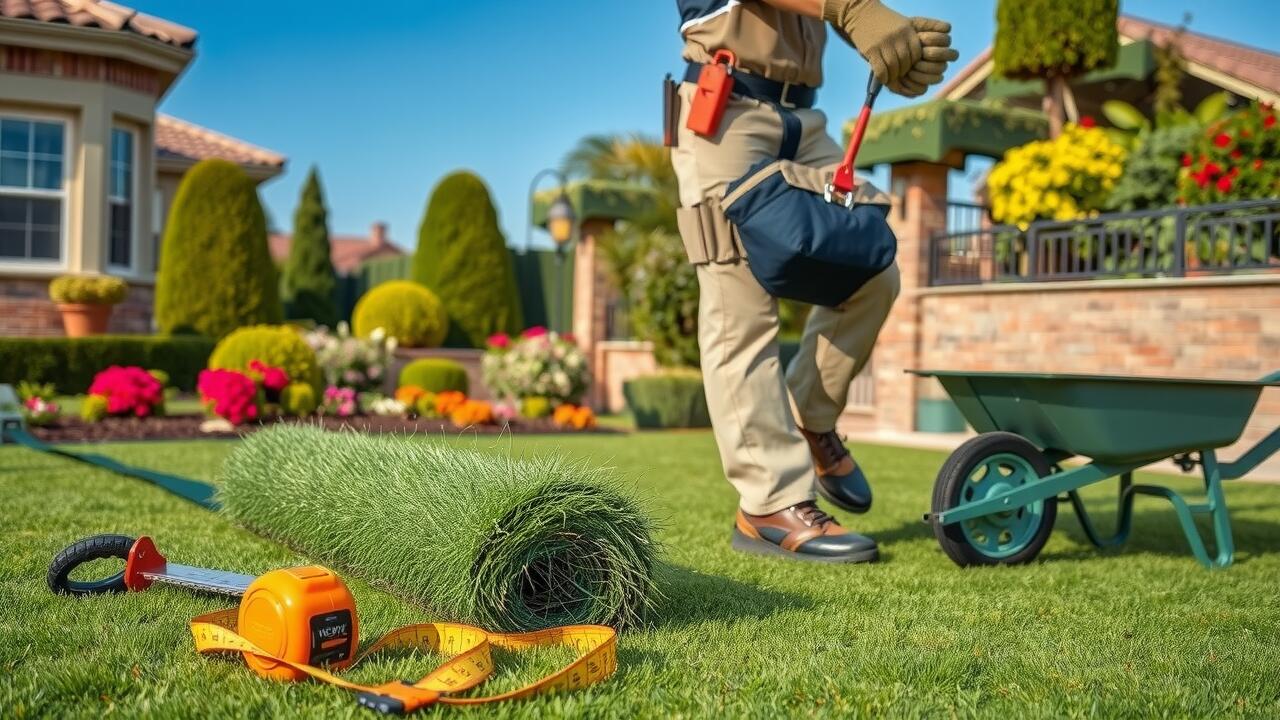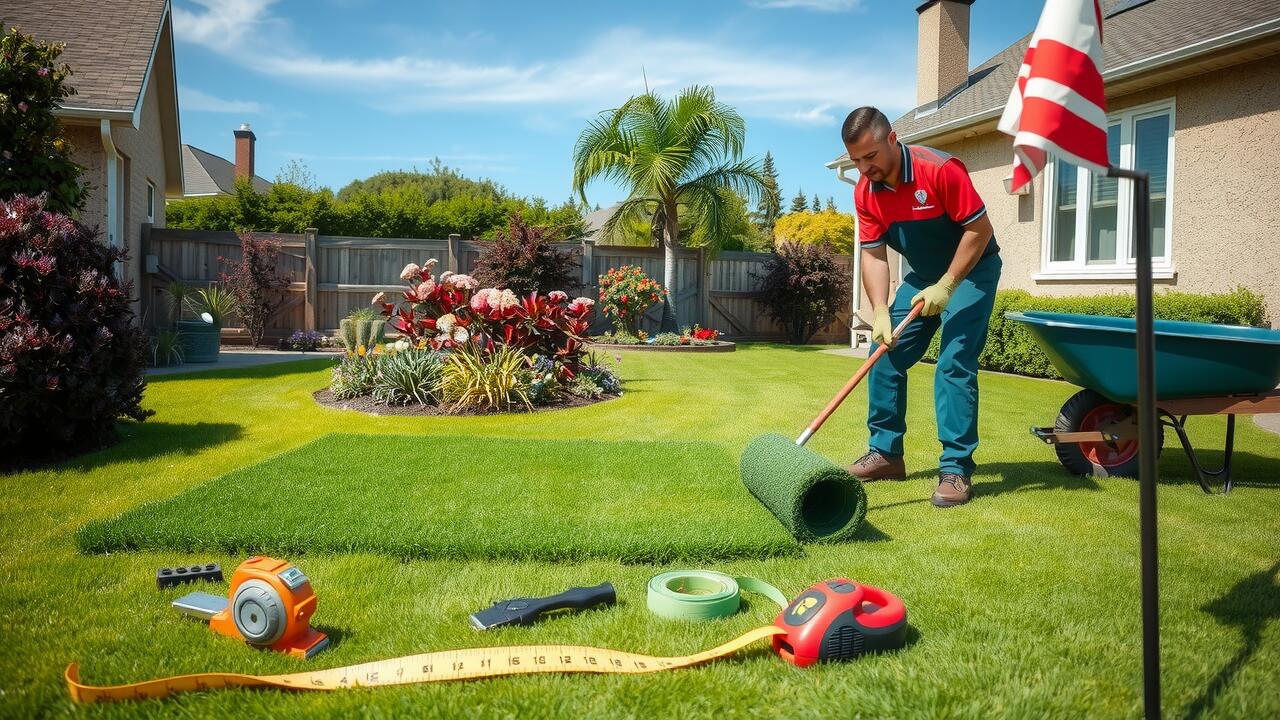
Challenges in Maintenance
Artificial grass requires careful maintenance to ensure its longevity and visual appeal. Without a layer of sand, the grass can suffer from issues related to drainage and stability. This can lead to uneven surfaces that may contribute to an array of problems, such as excessive wear in high-traffic areas. Over time, the aesthetic and functionality of the lawn can diminish significantly, necessitating more frequent repairs.
Without the proper base, debris accumulates more readily and can become trapped within the grass fibers. This makes cleaning more challenging and can foster an environment for pests. Maintenance tasks like brushing and washing can become time-consuming, detracting from the overall enjoyment of the space. Consequently, maintaining artificial grass without sand can lead to a frustrating experience for homeowners.
Increased Difficulty in Upkeep
Without sand underneath, maintaining artificial grass can become significantly more challenging. The absence of a proper base can lead to uneven surfaces, making it difficult to manage wear and tear. Compacted soil beneath the turf can result in drainage issues, which exacerbate maintenance difficulties. Cleaning becomes more tedious as debris and dirt can accumulate more easily.
Artificial grass without sand may also lack the stability needed during heavy use. Over time, the turf may shift or become displaced, requiring more frequent adjustments and repairs. This instability can lead to patches that wear down more quickly compared to those with a proper base layer. Regular maintenance routines may increase in frequency, adding to the overall effort needed to keep the area functional.
Impact on Temperature Regulation
Artificial grass has gained popularity in residential and commercial settings due to its aesthetic appeal and low maintenance needs. However, when not installed with a layer of sand underneath, it can exhibit temperature regulation issues. The absence of sand means there is less heat absorption and retention, leading to increased surface temperatures during hot weather. This can create an uncomfortable environment for both people and pets using the space.
The lack of proper drainage and thermal management can exacerbate this problem. Without sand, the artificial grass may heat up significantly, making it unwelcoming on sunny days. This situation not only affects the comfort level for individuals walking or playing on the grass but can also impair the integrity of the turf over time. Managing the temperature of artificial grass without sand becomes more challenging and may require additional measures to ensure a comfortable experience.
Managing Heat Levels in Your Lawn
Excessive heat absorption is a common issue encountered with artificial grass when sand is not utilized underneath. The absence of a proper infill layer can lead to higher surface temperatures, making the lawn uncomfortably warm during hot weather. This can affect not only the longevity of the grass but also the comfort of those using the space. Without sand’s ability to provide a heat barrier, users may find themselves less inclined to spend time on the surface.
In addition to comfort, temperature regulation plays a crucial role in the overall functionality of artificial grass. High surface temperatures can lead to the grass degrading at a faster rate. This can diminish both its aesthetic appeal and performance. For sports and recreational activities, maintaining cooler surface temperatures is essential for optimal playability and safety.
Influence on Playability
The absence of sand under artificial grass can significantly impact playability, especially in sports settings. Players rely on a consistent surface that offers adequate traction and shock absorption. Without this foundational layer, athletes may experience an uneven playing field that can lead to slips or injuries. The surface may feel harder, affecting performance during activities such as running, jumping, or sudden changes in direction.
In recreational settings, the lack of sand can also affect the overall experience for users. Families and pets may find the surface less forgiving, leading to discomfort during playtime. Proper drainage is compromised, which can lead to mud accumulation during rain, further hindering enjoyment. Play areas meant for engagement and fun can turn into undesirable spaces without the right base material underneath.
Experience of Athletes and Users
Athletes and users often find that the quality of play on artificial grass can be significantly affected by the absence of sand underneath. Without this essential layer, the surface may become too hard or uneven, leading to an increased risk of injuries and impacting performance. Players require a reliable surface that provides adequate shock absorption, which is often compromised when sand isn’t used.
Additionally, the overall experience for recreational users can diminish. The traction and stability offered by well-installed artificial grass with the right infill promote comfort during various activities. A lack of proper base material may result in a less enjoyable experience, as users might feel unsteady or encounter unexpected bounce, adversely affecting games and leisure activities on the surface.
FAQS
Why is sand important under artificial grass?
Sand provides stability, helps with drainage, and supports the weight of the turf, ensuring it maintains its shape and texture over time.
What maintenance challenges arise without sand beneath artificial grass?
Without sand, the artificial grass can become uneven, leading to increased difficulty in upkeep, such as more frequent cleaning and potential wear and tear.
How does the lack of sand affect temperature regulation in artificial grass?
Sand helps to dissipate heat, keeping the surface cooler. Without it, the artificial grass can become excessively hot, making it uncomfortable for users and limiting usage during peak temperatures.
What impact does not using sand have on the playability of artificial grass?
The absence of sand can lead to a less stable playing surface, which may affect the performance of athletes and users, resulting in a potentially unsafe experience.
Can I install artificial grass without sand, and what are the risks?
While it is possible to install artificial grass without sand, it poses risks such as increased maintenance, poor temperature regulation, and reduced playability, which can ultimately affect longevity and user satisfaction.
